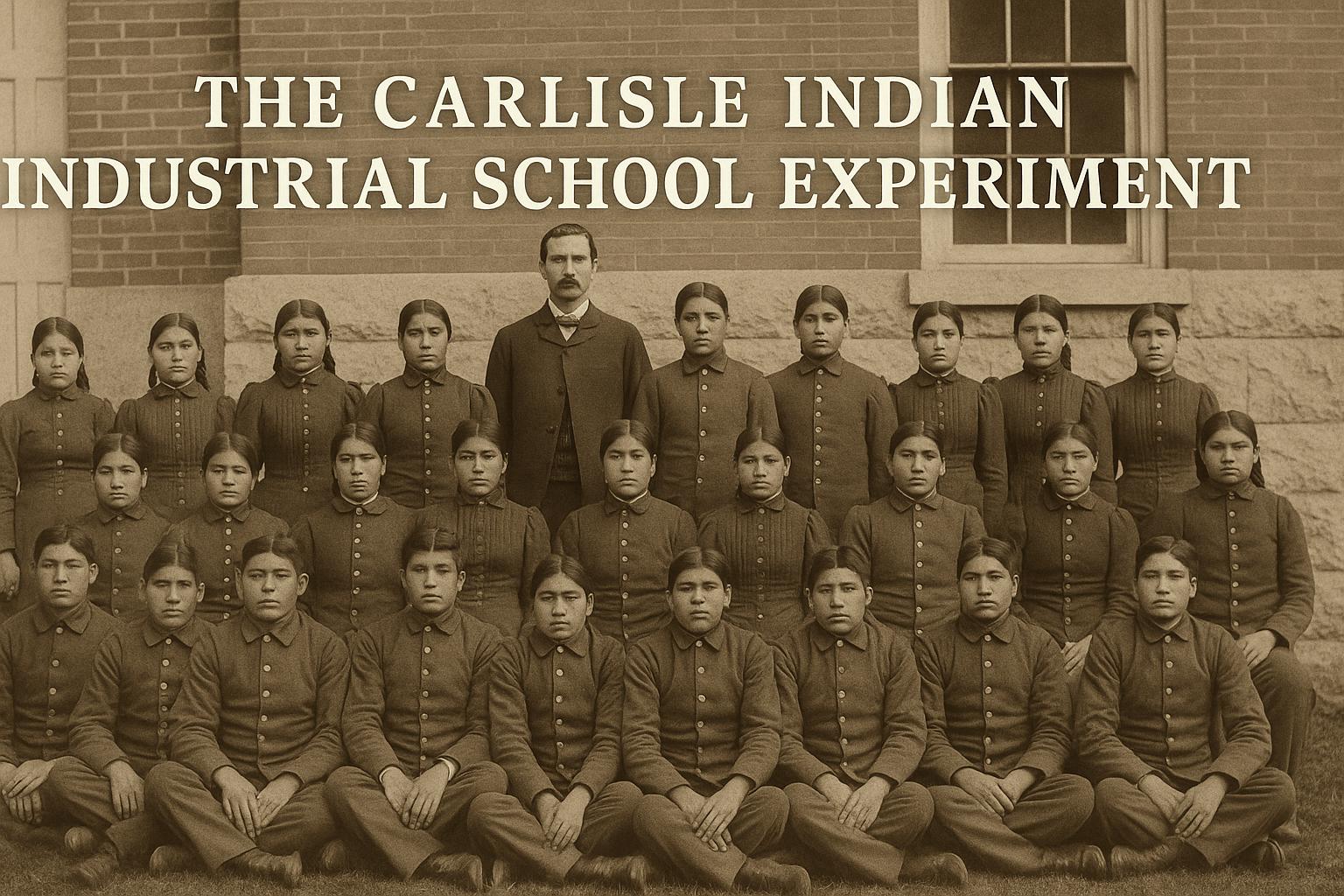The Carlisle Indian Industrial School: An Overview
The Carlisle Indian Industrial School remains a significant landmark in the context of Native American education and assimilation policies within the United States. Established in 1879 under the leadership of Captain Richard Henry Pratt, a former military officer, the institution was operational in Carlisle, Pennsylvania, until 1918. Pratt’s aim was to assimilate Native American children into Euro-American culture, employing an approach that today is often regarded as controversial and damaging.
Educational Philosophy and Practices
The foundation of the school’s philosophy can be summed up by the phrase “Kill the Indian in him, and save the man,” reflecting Pratt’s belief in the need to educate Native American children by eradicating their cultural identities and replacing them with Euro-American values. The efforts to reshape these identities took place through several means: enforcing English language acquisition, insisting on Christian religious practices, and adopting Western dress codes.
At Carlisle, students followed a strict curriculum that combined academic education with vocational training. The academic subjects primarily focused on fundamental skills such as reading, writing, and arithmetic. The vocational training was aimed at providing students with practical skills necessary for integrating into mainstream American life. The training sought to prepare students for a society in which Native American cultural practices were neither recognized nor valued.
The Impact on Native American Students
The impact of the Carlisle Indian Industrial School on Native American students was profound and varied. The school’s policy of removing children from their families and communities caused emotional and cultural devastation. The enforced prohibition of Native languages and customs led to considerable cultural alienation amongst the students. The experience of being uprooted from their cultural heritage and being thrust into an unfamiliar, often unwelcoming environment had lasting effects.
While some alumni reported successes with the skills and education obtained at Carlisle, others associated their experiences with cultural disconnection and identity loss. These varied experiences among former students mirror the broader, often contentious conversations surrounding Indian boarding schools across the United States. The schools were controversial institutions where many faced a struggle between adaptation and alienation, carrying implications that extend far beyond their educational scope.
Legacy and Historical Significance
The Carlisle Indian Industrial School established a template for other institutions with similar missions of assimilating Native American populations through schooling. The legacy of Carlisle is often analyzed through the lens of historical trauma, examining the long-lasting influence such assimilation policies have had on Native communities.
Scholars and descendants of former students continue to debate the school’s historical role and significance. It remains a subject of study and analysis, with its records providing valuable insights into both the intended educational goals and the unintended consequences of these cultural assimilation policies. The school stands as a pivotal case study in understanding the complexities of assimilation strategies, highlighting the need to comprehend its impact fully.
Contemporary Reflections
In recent years, the topic of Indian boarding schools, including the Carlisle Indian Industrial School, has entered public dialogue, particularly in the scope of confronting historical injustices and promoting reconciliation. Museums and cultural institutions actively work to preserve and present the narratives of individuals affected by these schools, aiming to foster a comprehensive understanding of this intricate chapter in American history.
Today, there is an ongoing effort to reflect on the past accurately and responsibly, acknowledging the injustices faced by Native American communities while seeking paths for reconciliation and healing. The legacy of institutions like the Carlisle Indian Industrial School informs contemporary discussions about cultural preservation, the right to one’s own identity, and the broader impacts of systemic assimilation policies.
As dialogue continues, there is hope that these reflections on history can guide future generations towards a more inclusive and respectful understanding of cultural differences. These discussions remain critical in making amends and building an equitable society that honors the diverse backgrounds and inherent rights of all its people.

